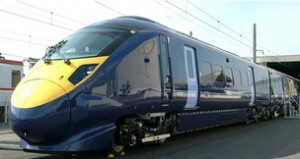If the bullet train project is to pencil out, it must operate far more economically than any high-speed rail system in the world, according to the experts, who include former World Bank executive William Grindley.
Unless these extraordinary economies actually are achieved, the train will require alarmingly high annual operating subsidies “forever,” as the experts wrote in a report last month. The annual operating deficit could top $2 billion, they wrote.
The rail authority disputes the experts’ conclusions. The issue is of crucial importance, because by law, the state is forbidden from subsidizing the bullet train.
“We showed that their (projected) operating costs and revenue costs per mile were significantly lower than what anybody anywhere in the world had ever been able to achieve,” said Alan Bushell, a retired technology executive and co-author of the study. Other authors are retired Stanford University economics professor Alain Enthoven and Silicon Valley financial expert William Warren.
The rail authority’s business plans indicate that the bullet train would cost about 10 cents per passenger mile to operate, Bushell said in a recent interview.
That means it would cost 10 cents to carry one passenger one mile on the rail system. But international high-speed rail systems cost on average about 43 cents per passenger mile, he said.
“They have to have worked some incredible operating efficiencies to justify those kinds of costs,” Bushell said of California’s rail planners. “I doubt they have.”
The financial experts’ study reviewed operating cost data for international bullet trains, including reports compiled by the Spanish banking group BBVA.
The experts found the world’s lowest operating costs were in Italy – about 34 cents per passenger mile. Highest costs were in Germany and Japan – 50 cents per passenger mile. In the U.S., Amtrak’s Acela Express, a high-speed line linking Washington, D.C., and Boston, costs about 44 cents.
The rail authority “insists loudly that the High Speed Rail service will be run at a profit from an operating point of view,” the experts wrote. “… They reach this conclusion because they dramatically understate operating costs, which our analysis shows will be much higher.”
The rail authority contends that its operating cost projections are sound, derived from a sophisticated computer model. The system will turn a profit and won’t require operating subsidies, rail officials insist.
In a statement, rail board member Mike Rossi said the bullet train’s planners used conservative assumptions to verify that the rail line will operate profitably.
Regarding the outside experts’ critique, Rossi said, “We have met with the authors of the report in an attempt to correct their flawed assumptions and conclusions.”
That’s not precisely true, countered Grindley.
He said he and his co-authors have repeatedly asked the rail authority for the data that underlies their calculation of the bullet train’s projected operating costs. The rail authority hasn’t made the information public, he said.
“Our deduction is that their cost calculation must be either eliminating items that are included in the operating and maintenance costs (of the foreign rail lines) or they have downgraded the costs,” he said. “Or both.”
